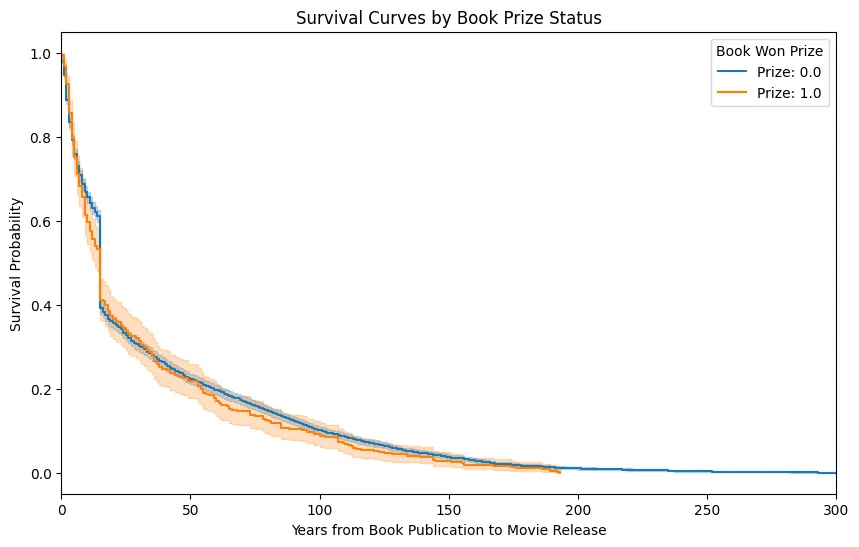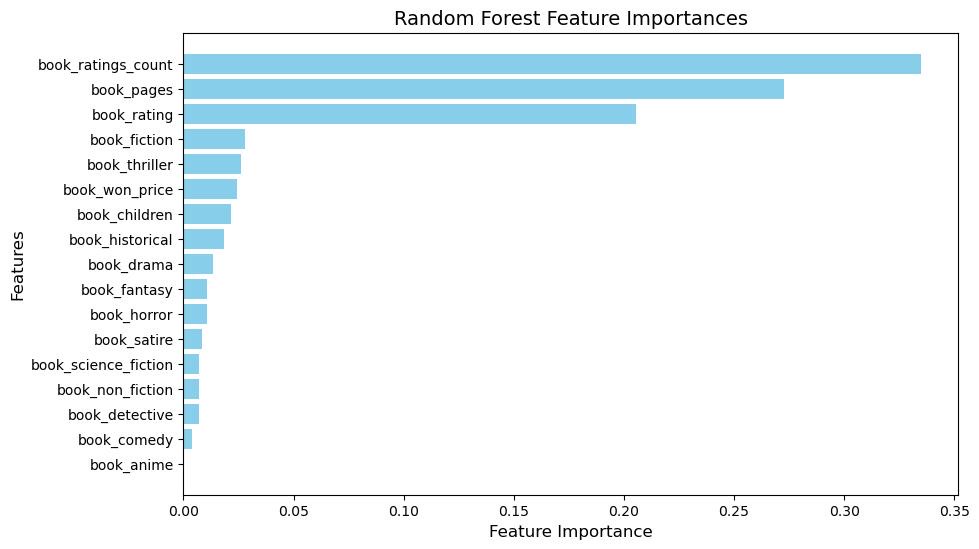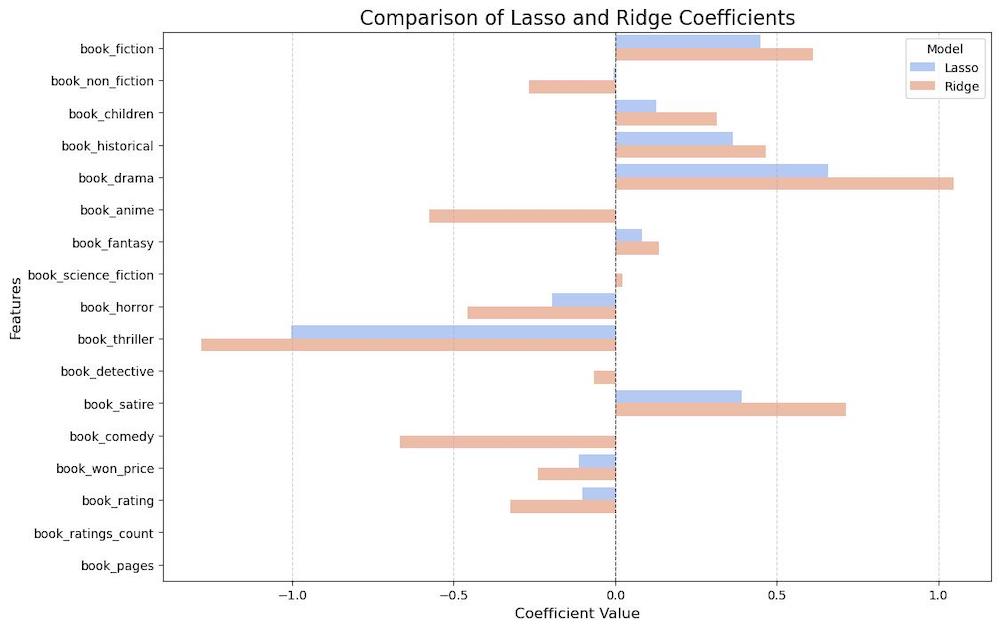The Path to Adaptation
The Path to Adaptation: A Tale of Books in Waiting
Picture a vast library, its shelves stretching endlessly into the distance. Each book sits patiently, holding stories that whisper of their potential to leap from page to screen. Some will wait mere moments in the grand scheme of things, while others will watch decades pass before their stories find a new life in cinema. This is their tale, told through numbers but lived through dreams. We’ll write a data story that weaves together these fascinating insights about book-to-movie adaptations in an engaging narrative format.
The Great Wait: Understanding Adaptation Timelines
In the ever-evolving landscape of storytelling, the journey from printed page to silver screen is far from straightforward. Our analysis of nearly 4,000 book-to-movie adaptations reveals a fascinating pattern of how stories make this transition, marked by both swift transformations and lengthy delays.

The typical book waits 15 years to see its story translated to film, though the average stretches to 38.7 years – a disparity that tells its own tale. Some books race to the screen with remarkable speed, while others wait patiently for decades, creating what statisticians call a “right-skewed distribution.” Perhaps most intriguingly, some adaptations appear to defy time itself, with production beginning up to 75 years before official book publication, likely drawing from manuscripts or works-in-progress.
The Genre Effect: How Content Shapes Timing
Not all books face the same journey to Hollywood. Genre plays a crucial role in determining a book’s path to adaptation:
- Fast Track: Thrillers and crime fiction lead the race, typically making it to screen in 7-8 years
- Middle Lane: Dramas take their time, with a median wait of 16 years
- Slow Lane: Romance novels often age like fine wine, typically waiting 24.5 years before their screen debut
The Award Factor
One might expect literary prizes to fast-track a book’s journey to the screen. Our survival analysis shows an interesting pattern:

The data reveals that prize-winning books don’t necessarily get preferential treatment in the adaptation timeline. In fact, the curves for prize-winners and non-winners follow remarkably similar paths, suggesting that other factors may be more influential in determining adaptation speed.
Modern Trends and Industry Evolution
Our machine learning analysis, combining Lasso, Ridge regression, and Random Forest techniques, reveals some surprising patterns:

The most influential factors in determining adaptation timing are:
- Book popularity (ratings count)
- Book length (pages)
- Book rating

Interestingly, while genre remains important, these fundamental characteristics of books appear to have an even stronger influence on their adaptation timeline.
- Books classified as fiction, historical, children’s, and drama genres tend to have the longest adaptation time gaps. This is likely due to the demanding production requirements, such as the need to create entirely new worlds, characters, and elaborate settings.
- Satire books also show a tendency for delayed adaptations. This delay could be attributed to censorship challenges, as satire often addresses sensitive societal topics that may not always align with mainstream readiness or acceptance.
- On the other hand, thriller and horror books exhibit the shortest adaptation gaps. This is likely because these genres are highly popular and in greater demand, making production companies more inclined to adapt them quickly. Additionally, their value lies more in execution—such as the ambiance, music, and plot—rather than requiring high budgets or complex production.
- As for anime books, their impact on adaptation time gaps is insignificant due to their limited representation in the dataset.
The Speed Spectrum
Looking at the overall landscape of adaptations:
- 37.9% take the scenic route (>30 years)
- 30.4% are “Very Fast” adaptations (≤5 years)
- 20.3% maintain a steady pace (6-15 years)
- 11.4% take a moderate approach (16-30 years)

This polarization suggests a “two-speed” industry: books either catch the fast train to adaptation or settle in for a longer journey, with relatively few taking the middle path.
The Future of Adaptation
With the entertainment industry’s ever-growing appetite for content, we’re seeing larger numbers of adaptations in recent decades. However, this hasn’t necessarily meant faster adaptations – if anything, modern filmmakers are more willing to reach far back into literary history for their source material.

This comprehensive analysis reveals that the journey from page to screen is a complex interplay of genre, timing, and industry dynamics. While some books make the leap almost instantly, others wait centuries for their moment in the spotlight – proving that in the world of adaptations, it’s never too late for a good story to find its way to the screen.